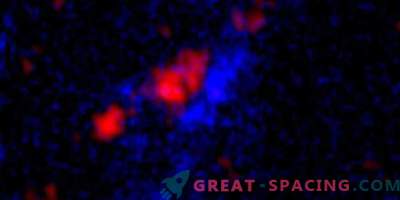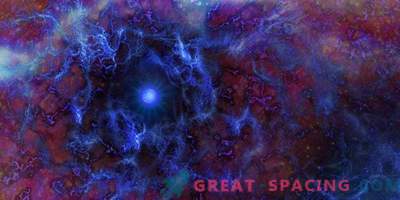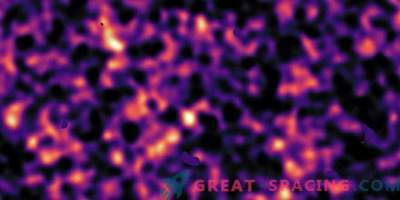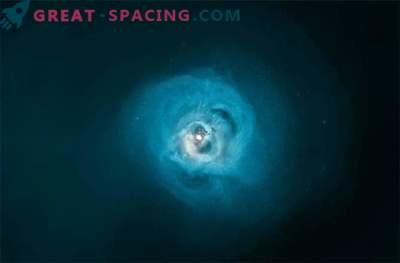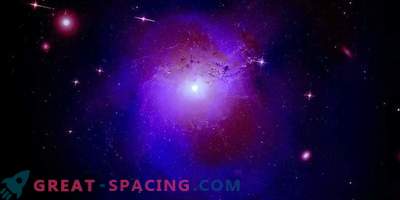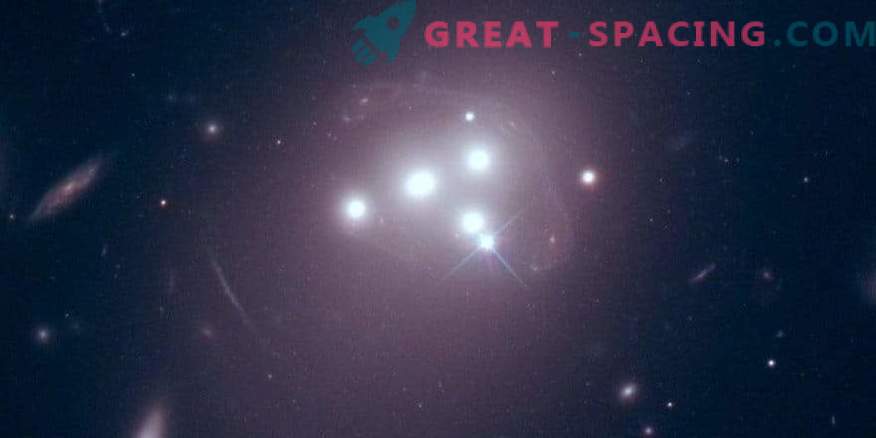
The Hubble Space Telescope demonstrates 4 giant galaxies at the base of the Abell 3827 cluster. The three-hour exposure displays a view of visible wavelengths and a near-infrared ray. Distorted image of a more distant galaxy behind the cluster is hardly visible
Scientists were again in total darkness regarding the nature of dark matter. New observations have shown that the mysterious substance is not able to come into contact with forces other than gravity.
Three years ago, researchers from Durham felt that they had made a real breakthrough and determined what dark matter is. They used the Hubble Space Telescope to view the Abell 3827 galactic cluster (1.3 billion light years away). They managed to find that the galaxy is distant from the surrounding dark matter.
Such a shift was predicted during the collision period, if the dark matter is capable of contacting forces other than gravity. All this potentially prompted the substance we are dealing with. Abell 3827 is well oriented to the earth observer and allows for highly sensitive measurements of its dark matter.
But now the same group reports that the new observations show that the dark matter in Abell 3827 is not separated from the galaxy. This confirms the general theory that the mysterious substance lends itself only to gravity.

A view of 4 galaxies in the center of the Abell 3827 cluster in a wider range of wavelengths, including a Hubble image in UV (blue) and ALMA (red contour lines). Here, the foreground cluster becomes almost transparent, revealing a better view of the background galaxy.
The hunt for dark matter is once again declared open! Until it contacts the Universe, it is difficult for us to understand its nature. Approximately 27% of the space is represented by dark matter, and the rest is set aside for dark energy. Only 5% is normal matter (stars, planets, etc.).
No one knows what dark matter is, but it influenced the appearance of today's Universe. Without gravity limitation, massive galaxies would be scattered in different directions during rotation.
A supercomputer model of two galactic clusters colliding, demonstrating the same effects as Abell 3827. All galactic clusters contain stars (orange), hydrogen gas (red) and invisible dark matter (blue). Individual galaxies and stars are so remote that they pass by each other. Diffuse gas slows down and moves away from the galaxy due to the forces between ordinary particles (such as friction). If dark matter feels only the force of gravity, then it must remain in the same place as the stars. If not, then its trajectory changes In the last review used the power of ALMA. The analysis clearly showed that dark matter remains in its galaxy. But researchers still claim that this does not prove its insensitivity. Perhaps the interaction is too weak or a particular galaxy moves on us.
Simulation of the same collision if the dark matter consisted of extremely strongly contacting particles. The resulting distribution of dark matter and gas is not consistent with observations in the real Universe
In the past two years, several new theories about substandard dark matter have appeared. Some even used a supercomputer to create models. But research and research continues.
Simulating the same collision if there is no dark matter at all. The resulting distribution of stars and gas does not agree with actual observations
To measure dark matter in hundreds of galactic clusters, Durham University ended up helping with the construction of the new SuperBIT telescope. It should rise above the earth's atmosphere on a giant helium balloon.

